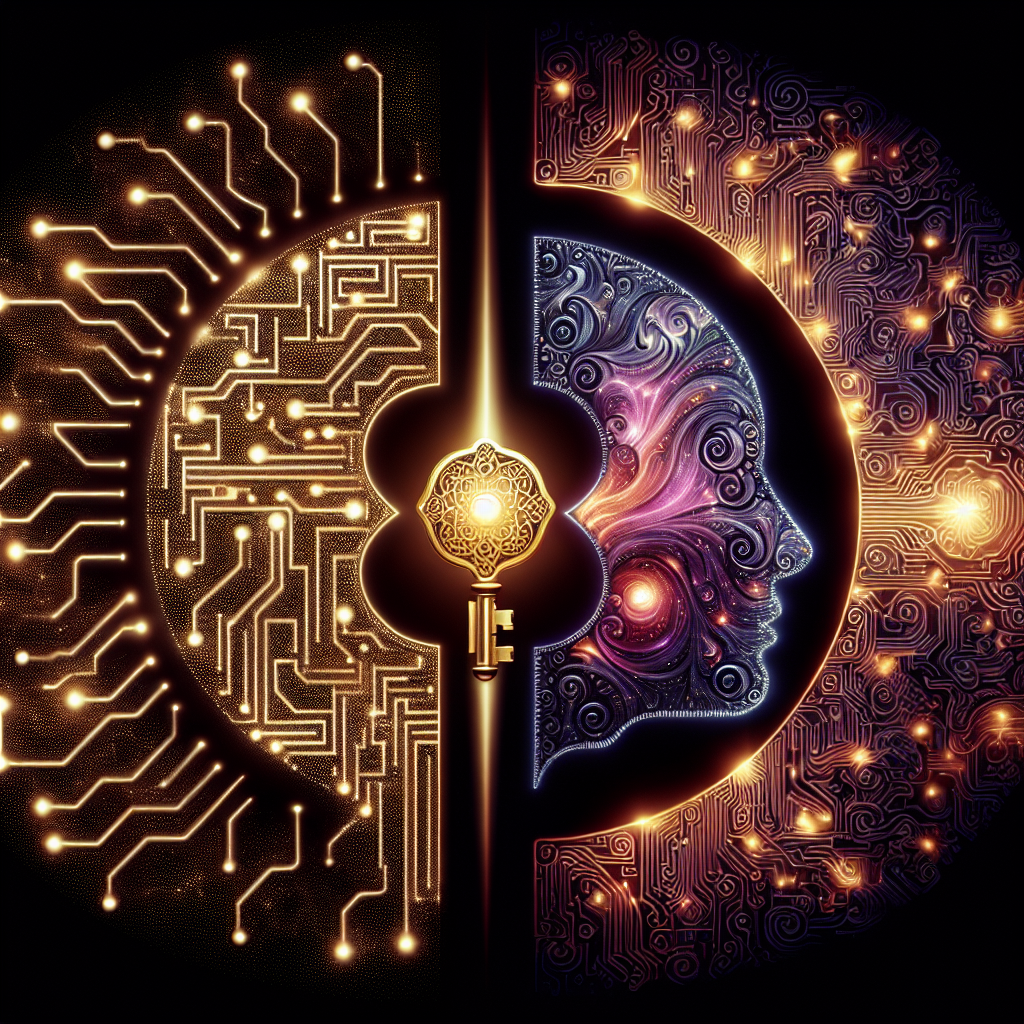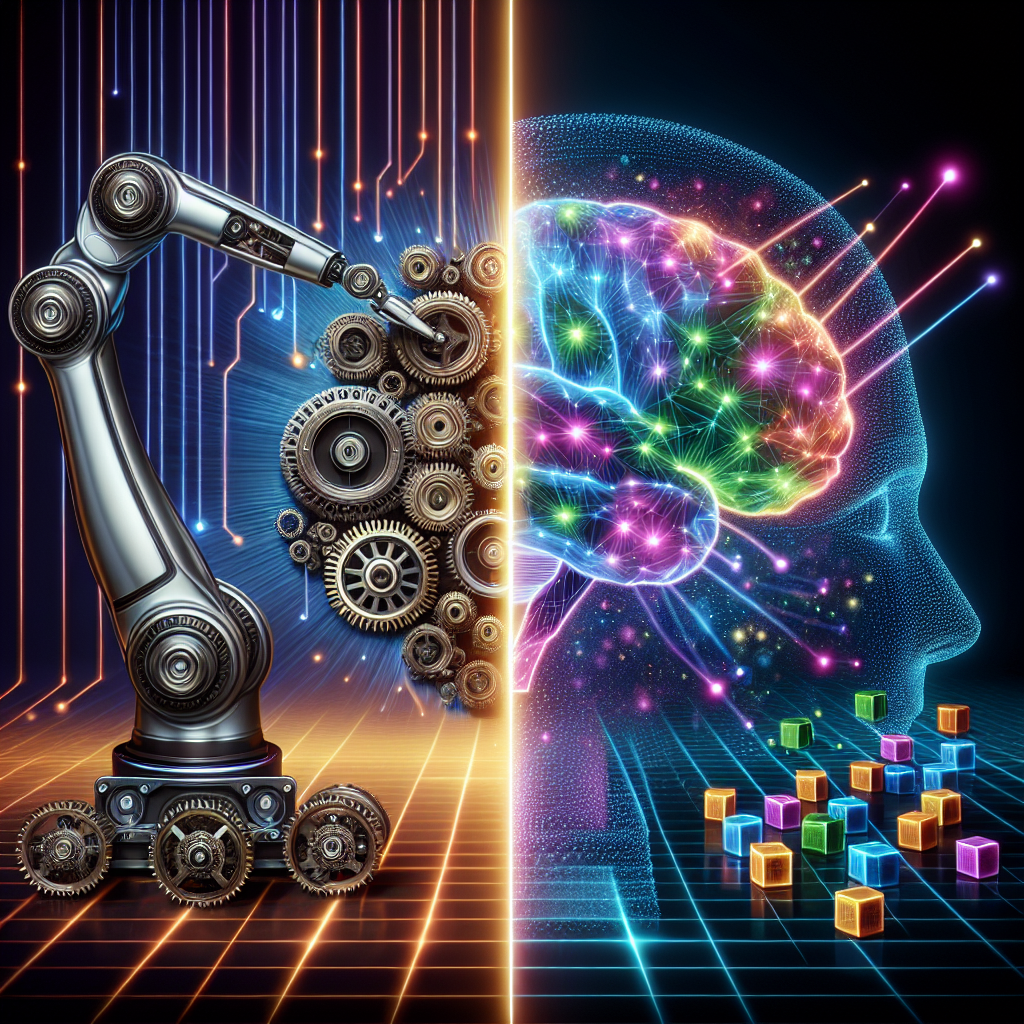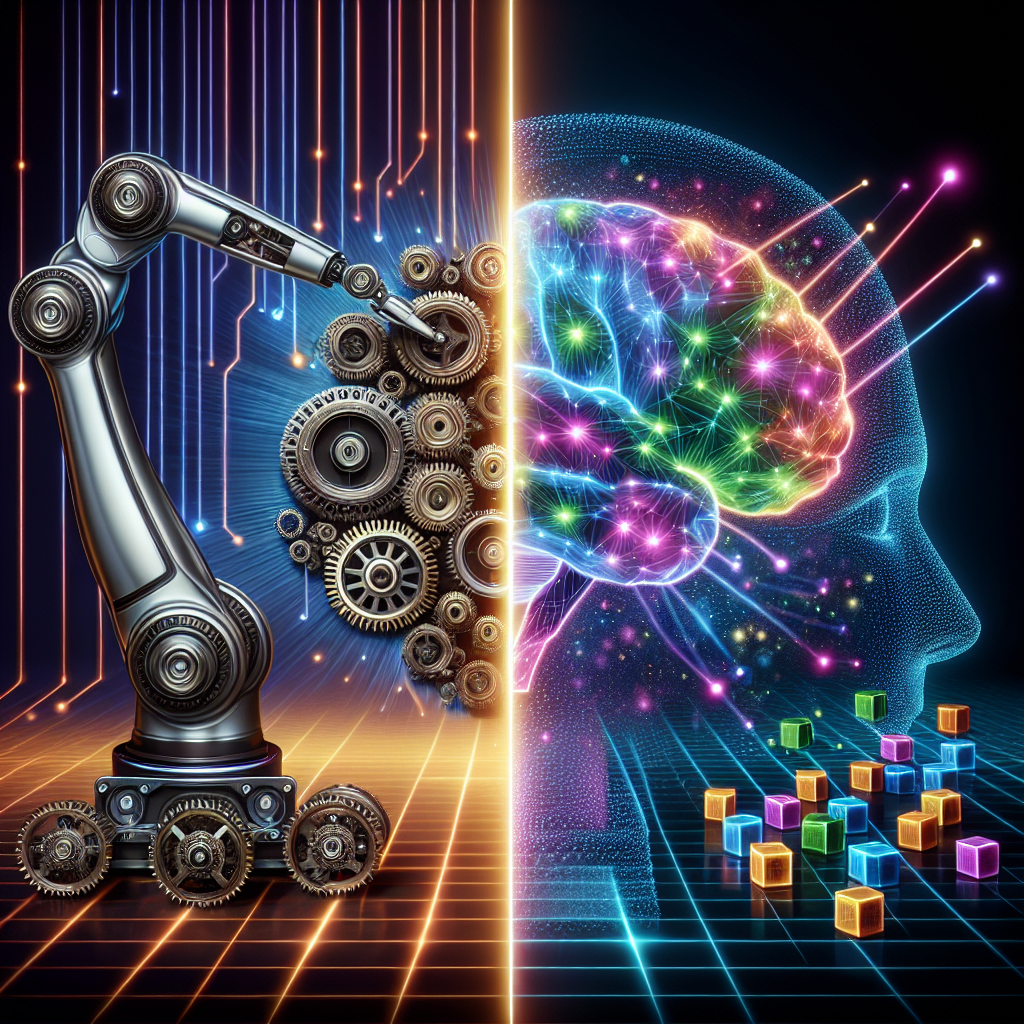Have you ever wondered about the difference between AI and machine learning? While they may seem interchangeable, there are distinct characteristics that set them apart. In this article, we will explore the dissimilarities between these two concepts, shedding light on their unique functionalities and applications. Get ready to unravel the mysteries of AI and machine learning!
AI and Machine Learning Defined
Definition of AI
AI, or Artificial Intelligence, refers to the simulation of human intelligence in machines that are programmed to think and learn like humans. It involves building intelligent systems capable of performing tasks that typically require human intelligence, such as understanding natural language, recognizing objects, solving problems, and making decisions. AI allows machines to analyze and interpret large amounts of data, acquire knowledge, and adapt to changing circumstances.
Definition of Machine Learning
Machine Learning is a subset of AI that focuses on enabling machines to learn from data and improve their performance without explicit programming. It is a scientific discipline that deals with the design and development of algorithms enabling machines to learn patterns and make predictions. Through machine learning, computers can identify patterns and relationships in large datasets, extract valuable insights, and make accurate predictions or decisions based on this acquired knowledge.
Relationship Between AI and Machine Learning
AI as a Broader Concept
AI is a broader concept that encompasses various technologies and approaches, including machine learning. While machine learning is an essential component of AI, AI also incorporates other techniques and methods, such as expert systems, natural language processing, computer vision, and robotics. AI aims to mimic human intelligence in all its forms, which goes beyond just the ability to learn from data.
Machine Learning as a Subset of AI
Machine learning, on the other hand, is a specific approach within the field of AI. It focuses on training computer systems to learn from and recognize patterns in data, without explicitly being programmed for every task. Machine learning allows systems to improve their performance over time by continuously learning from new data. It is a fundamental tool and technique used within AI to achieve intelligent behavior and decision-making capabilities.

Scope and Application
AI’s Wide Range of Technologies
AI encompasses a wide range of technologies and applications that go beyond machine learning. It includes natural language processing (NLP), which enables machines to interpret and understand human language in written or spoken form. Computer vision allows machines to analyze and interpret visual data, such as images and videos. Robotics involves developing intelligent machines capable of performing physical tasks. Expert systems use knowledge-based rules to solve complex problems in specific domains.
Machine Learning’s Data-Driven Approach
Machine learning, as a subset of AI, focuses on a data-driven approach to problem-solving. It involves building models and algorithms that can learn from data and make predictions or take actions based on that learning. Machine learning is widely used in various fields, including healthcare, finance, marketing, and cybersecurity. It enables the discovery of patterns and insights in large datasets, which can be leveraged for making informed decisions or predictions.
Approach to Problem Solving
AI’s Rule-Based and Logic-Driven Approach
AI often relies on rule-based systems and logic-driven approaches to problem-solving. Expert systems use a collection of rules and knowledge to make decisions or provide recommendations in a specific domain. These rules are carefully crafted by human experts and programmed into the system. AI systems can reason through complex logic and make decisions based on these rules, mimicking human problem-solving processes.
Machine Learning’s Statistical and Pattern Recognition Approach
Machine learning, on the other hand, takes a statistical and pattern recognition approach to problem-solving. Instead of relying on explicit rules, machine learning algorithms learn patterns and relationships from data. They use statistical techniques to identify hidden patterns, detect anomalies, and make predictions. This approach is particularly powerful when dealing with complex problems that are difficult to solve using rule-based systems alone.

Dependency on Data
AI’s Reliance on Structured and Unstructured Data
AI systems rely on both structured and unstructured data to learn and make decisions. Structured data refers to data organized in a predefined manner, like data stored in databases or spreadsheets. Unstructured data, on the other hand, includes text documents, images, videos, and social media posts. AI systems need to process and analyze both types of data to extract meaningful information and gain insights for decision-making.
Machine Learning’s Dependence on Labeled Training Data
Machine learning algorithms heavily rely on labeled training data to learn and make predictions. Labeled training data consists of input data paired with corresponding target labels or outcomes. This data is used to train the machine learning model, which learns to recognize patterns and correlations between the input and output variables. The quality and quantity of labeled training data have a significant impact on the performance and accuracy of machine learning models.
Goal and Output
AI’s Objective of Simulating Human Intelligence
The primary goal of AI is to simulate human intelligence and replicate human-like behaviors in machines. AI systems strive to perform tasks that generally require human intelligence, such as understanding and generating natural language, recognizing objects in images, interpreting emotions, and making complex decisions. The output of AI systems can be in various forms, including text, speech, images, or physical actions, depending on the task at hand.
Machine Learning’s Objective of Predictive Analysis
Machine learning, on the other hand, focuses on the objective of predictive analysis. By learning patterns from historical data, machine learning models can predict future outcomes or make decisions based on the learned patterns. The output of machine learning algorithms typically involves predictions, classifications, or recommendations based on the input data provided.
Autonomy and Adaptability
AI Systems with High Autonomy and Adaptability
AI systems strive to achieve high autonomy and adaptability. They aim to perform tasks with minimal human intervention and adapt to changing situations or environments. Advanced AI systems can learn from new data, update their knowledge base, and adjust their behavior accordingly. These systems can self-improve and adapt to new challenges, making them highly autonomous and adaptive.
Machine Learning’s Ability to Self-Learn and Improve
Machine learning algorithms also possess the ability to self-learn and improve over time. Through continuous exposure to new data, machine learning models can update their knowledge and improve their performance. They can automatically adjust their internal parameters and algorithms based on the feedback received from new data. This iterative learning process allows machine learning models to refine their predictions and achieve higher accuracy as they gather more experience.
Complexity and Versatility
AI’s Capability to Handle Complex Tasks and Problems
AI exhibits the capability to handle complex tasks and problems that require human-like intelligence. AI systems can handle tasks that involve complex decision-making, reasoning, and problem-solving, often in real-time. They can process vast amounts of data, handle uncertainty, and leverage advanced algorithms to arrive at optimal solutions. AI’s complexity lies in its ability to replicate the multifaceted nature of human intelligence in a machine.
Machine Learning’s Versatility in Handling Diverse Data
Machine learning demonstrates versatility in handling diverse types of data and extracting insights from them. It can effectively handle structured, unstructured, and semi-structured data, enabling analysis and prediction in various domains. Machine learning algorithms can handle different data formats, such as numerical data, text, images, and even audio. This versatility allows machine learning to be applied to a wide range of problems across various industries.
Human Interaction and Decision-Making
AI’s Interaction with Humans and Decision-Making Support
AI systems are designed to interact with humans in a meaningful way. Natural language processing enables AI systems to understand and generate human language, making it possible for humans to communicate with AI systems through speech or text. AI systems can provide decision-making support to humans by analyzing data, providing recommendations, and automating repetitive tasks, ultimately enhancing human productivity and aiding in decision-making processes.
Machine Learning’s Automation of Decision-Making Processes
Machine learning algorithms play a central role in automating decision-making processes. By learning patterns and relationships from data, machine learning models can make decisions based on the learned knowledge. This automation can be particularly valuable in situations where significant amounts of data need to be processed and analyzed, allowing for faster and more accurate decision-making without human intervention.
Ethical Considerations
AI’s Impact on Society and Ethical Concerns
AI’s increasing role in society raises ethical concerns surrounding privacy, security, accountability, and bias. AI systems have access to vast amounts of data, which may include sensitive personal information. Ensuring data privacy and security becomes crucial to safeguarding individuals’ rights. Transparency and accountability are also essential to understand the decision-making processes of AI systems and mitigate potential biases that may arise.
Machine Learning’s Bias and Fairness Challenges
Machine learning, being data-driven, also faces challenges related to bias and fairness. Biases present in the training data can be inadvertently learned by machine learning models and perpetuated in their predictions or decisions. This bias can result in unfair treatment or discrimination against certain individuals or groups. Efforts are being made to develop techniques and frameworks to identify and mitigate bias in machine learning models, promoting fairness and ethical use of AI technologies.
In conclusion, AI and machine learning are two interconnected fields within the broader concept of artificial intelligence. While AI aims to simulate human intelligence in machines, machine learning focuses on enabling machines to learn from data and improve their performance. AI encompasses various technologies and approaches beyond machine learning, such as natural language processing and robotics. Machine learning relies on a data-driven approach and depends on labeled training data. Both AI and machine learning contribute to problem-solving in their unique ways, with AI using rule-based and logic-driven approaches, and machine learning utilizing statistical and pattern recognition techniques. AI systems strive for autonomy and adaptability, while machine learning models can self-learn and improve over time. AI’s complexity lies in handling complex tasks, while machine learning demonstrates versatility in handling diverse data. Both AI and machine learning interact with humans, with AI providing decision-making support and machine learning automating decision-making processes. Ethical considerations arise with the increasing role of AI, including privacy, security, bias, and fairness concerns in both AI and machine learning applications.
